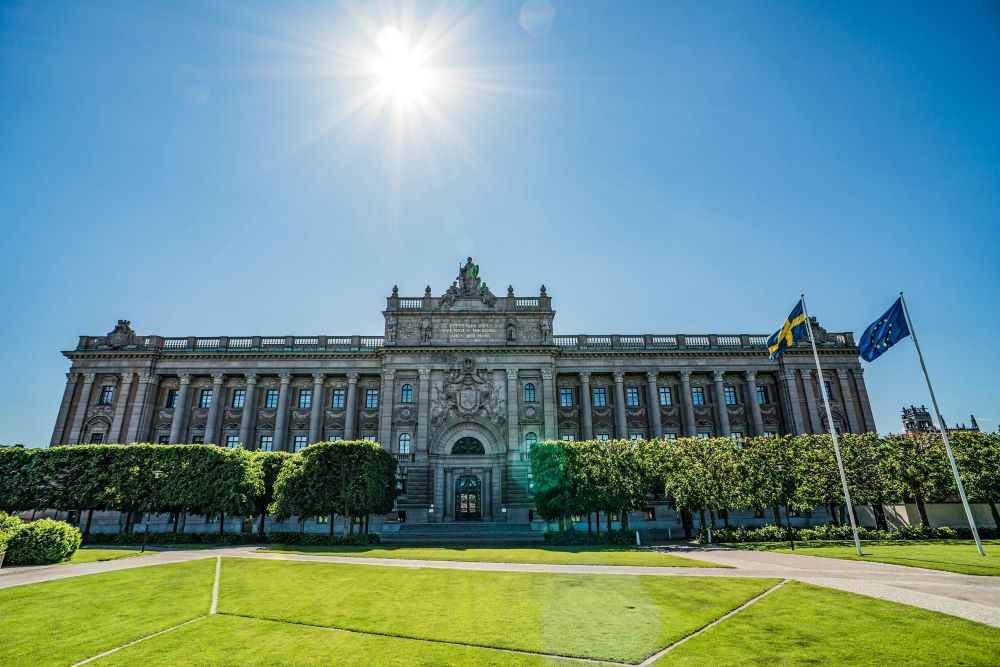Representatives from Ørsted, Liquid Wind, Lhyfe, Uniper, and the Bill Gates-founded climate fund Breakthrough Energy advocate for Sweden to initiate a new green industrial era by leveraging green hydrogen and electro-fuels. These sustainable solutions not only offer significant reductions in climate emissions but also promise new industrial investments that can create jobs and strengthen the Swedish economy.
Approximately one-third of global carbon dioxide emissions originate from sectors challenging to electrify, including energy-intensive industries and parts of the transportation sector like aviation and shipping. Green hydrogen production and its conversion into electro-fuels are pivotal for phasing out fossil fuels in these areas, making them crucial for achieving net-zero emissions in Sweden and Europe.
Electro-fuels are produced by combining green hydrogen with carbon dioxide from biogenic sources or nitrogen from the air, resulting in carbon-neutral fuels like e-methanol or e-ammonia. Replacing fossil fuels with electro-fuels can significantly reduce carbon emissions from transport and industry. For instance, the shipping industry could achieve a carbon reduction of over 95% by using e-methanol compared to traditional fossil fuels.
Sweden boasts unique conditions within Europe for producing green hydrogen and electro-fuels, thanks to its abundant supply of fossil-free and renewable electricity and the potential to increase electricity production further. Combined with a large supply of biogenic carbon dioxide from its forestry and district heating industry, Sweden has a unique opportunity to expand its industrial base with new strategic markets, all while enhancing its strategic fuel supply from domestic sources.
The European Commission has set a goal for the EU to produce 10 million tons of renewable hydrogen by 2030. As part of the EU’s “Fit for 55” climate package, binding requirements for the use of renewable hydrogen and electro-fuels will be introduced by 2030, along with higher ambitions for the emissions trading system (ETS) and carbon tariffs on certain imports through the Carbon Border Adjustment Mechanism (CBAM). Financial support systems for green hydrogen are emerging through the EU’s Hydrogen Bank, with countries like Denmark and the Netherlands setting up national support systems to further favor this emerging green industry.
Recent proposals by the Swedish government’s climate investigator, John Hassler, suggest creating favorable conditions for the industrial production of electro-fuels. The Bioeconomy Investigation also recommended long-term financial incentives for domestic production of renewable fuels, including electro-fuels. The International Energy Agency (IEA) emphasizes the importance of stimulating demand for renewable hydrogen and electro-fuels in a new report.
Energy and Business Minister Ebba Busch and the Liberals have expressed desires for the state to take greater responsibility in investments promoting new industrial ventures to accelerate climate transition. Sweden has the potential to lead this development, but it requires political investments in three main areas:
- Financial incentives to accelerate the introduction of green hydrogen and electro-fuels, as investing in production facilities carries risks due to the need for innovative technology development and currently higher costs compared to fossil fuels.
- A national target for the use of green hydrogen and electro-fuels in industry and heavy transport, to secure demand in the market’s initial phase, similar to Finland’s transport sector target.
- A plan for hydrogen’s role in the energy system and industrial transition, including a comprehensive strategy and action plan to accelerate the development of hydrogen infrastructure and electricity production required by the industry.
- The government now has an opportunity to attract new industrial establishments that can enhance Sweden’s competitiveness and economy through new job creation while being key to achieving climate goals. Thus, it is hoped that in 2024, the government will initiate actions that clearly signal direction and concrete proposals for the development of green hydrogen and electro-fuels in Sweden, potentially marking the beginning of a new industrial saga.
Original source debate article:
https://www.di.se/debatt/gron-vatgas-och-elektrobranslen-sakrar-sveriges-klimatomstallning-och-konkurrenskraft/

